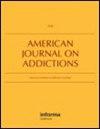Effects of persistent cannabis use on depression, psychosis, and suicidality following cannabis-induced psychosis: A longitudinal study
Abstract
Background and Objectives
Cannabis use is associated with psychotic disorder onset and exacerbation. This study examines how continued cannabis use affects depressive symptoms, psychotic symptoms, and suicidal behaviors following cannabis-induced first-episode psychosis (FEP).
Methods
Sixty-five participants (aged 16–50 years) with FEP were recruited from psychiatric inpatient facilities in northern Italy. Participants were categorized into two groups: non-cannabis users (NCU) and cannabis users (CU), based on substance use during the 9-month follow-up. Twenty-one participants (32.3%) were lost to follow-up, with a final sample of 44 subjects (NCU = 22, CU = 22). Assessments were conducted at baseline, 3 months, and 9 months using PANSS, CDSS, SSI, and GAF scales).
Results
CU exhibited persistently higher depression (CDSS) and suicidality (SSI) scores than NCU throughout follow-up, with significant differences at both 3 months (CDSS: p = .000006; SSI: p < .001) and 9 months (CDSS: p = .0000001; SSI: p < .001). Positive psychotic symptoms improved in both groups, though CU showed slower recovery and higher relapse rates (59.9% vs. 18.8%). PANSS positive subscale scores remained significantly higher in CU at 3 months (p = .001) and 9 months (p < .0002). GAF scores improved significantly only in NCU (p = .024 at 9 months).
Discussion and Conclusions
Continued cannabis use adversely affects depressive and psychotic symptoms and suicidality in FEP patients, while cannabis cessation is associated with improved clinical outcomes.
Scientific Significance
This study tracks depressive symptoms, suicidality, and psychotic manifestations in cannabis-induced FEP, demonstrating that continued use is associated with treatment-resistant depressive symptoms even when psychotic symptoms improve, highlighting the need for integrated clinical approaches.

 求助内容:
求助内容: 应助结果提醒方式:
应助结果提醒方式:


